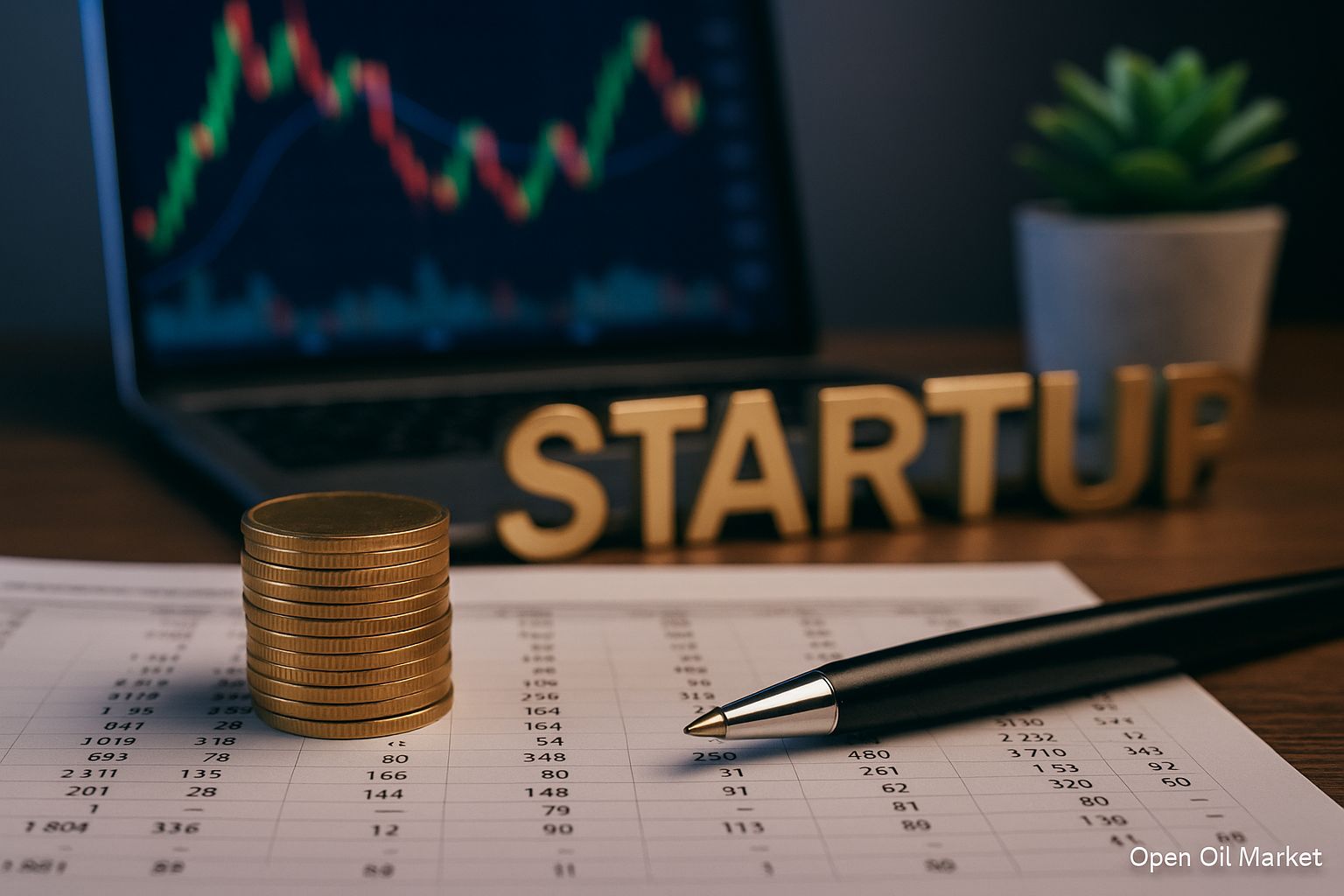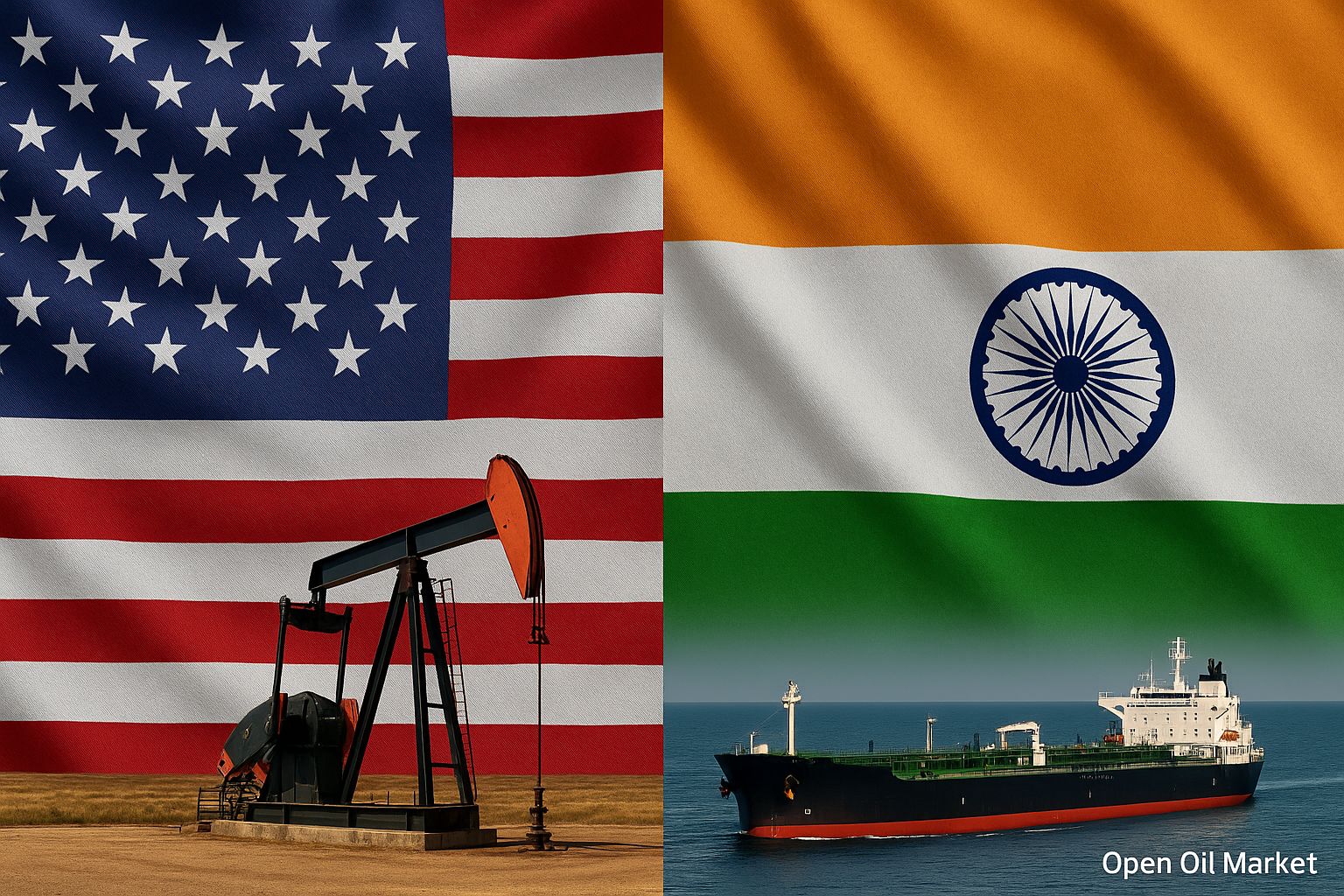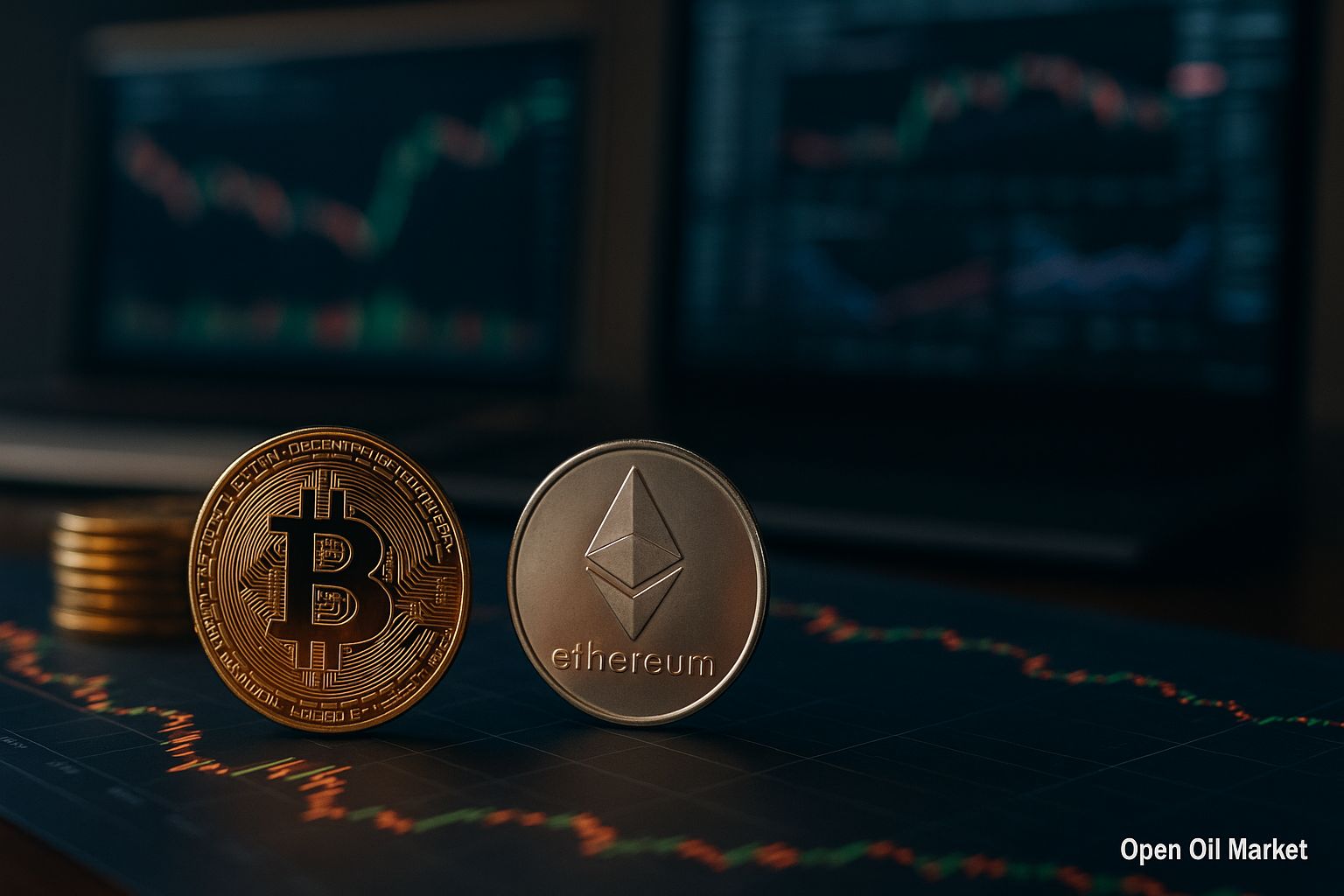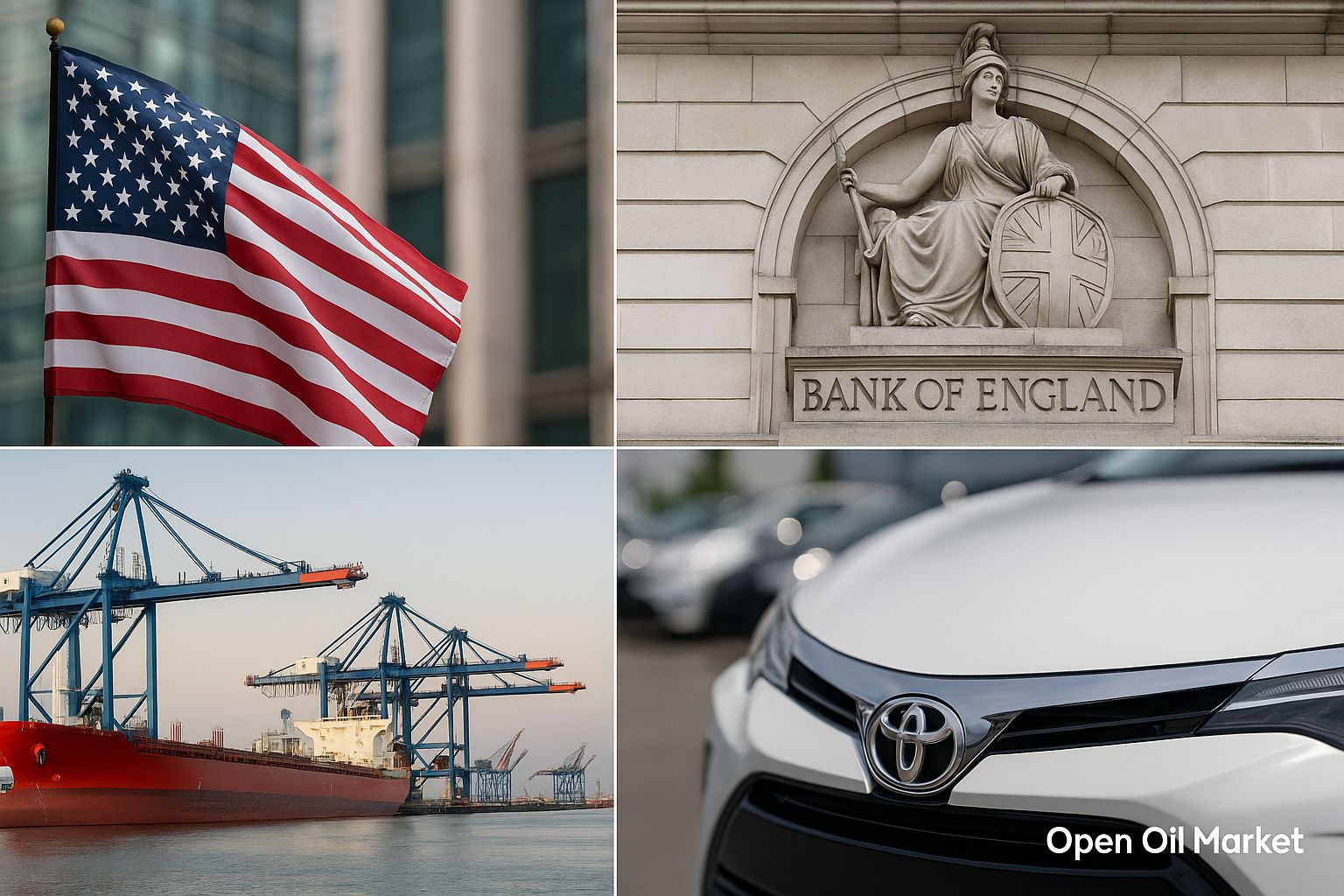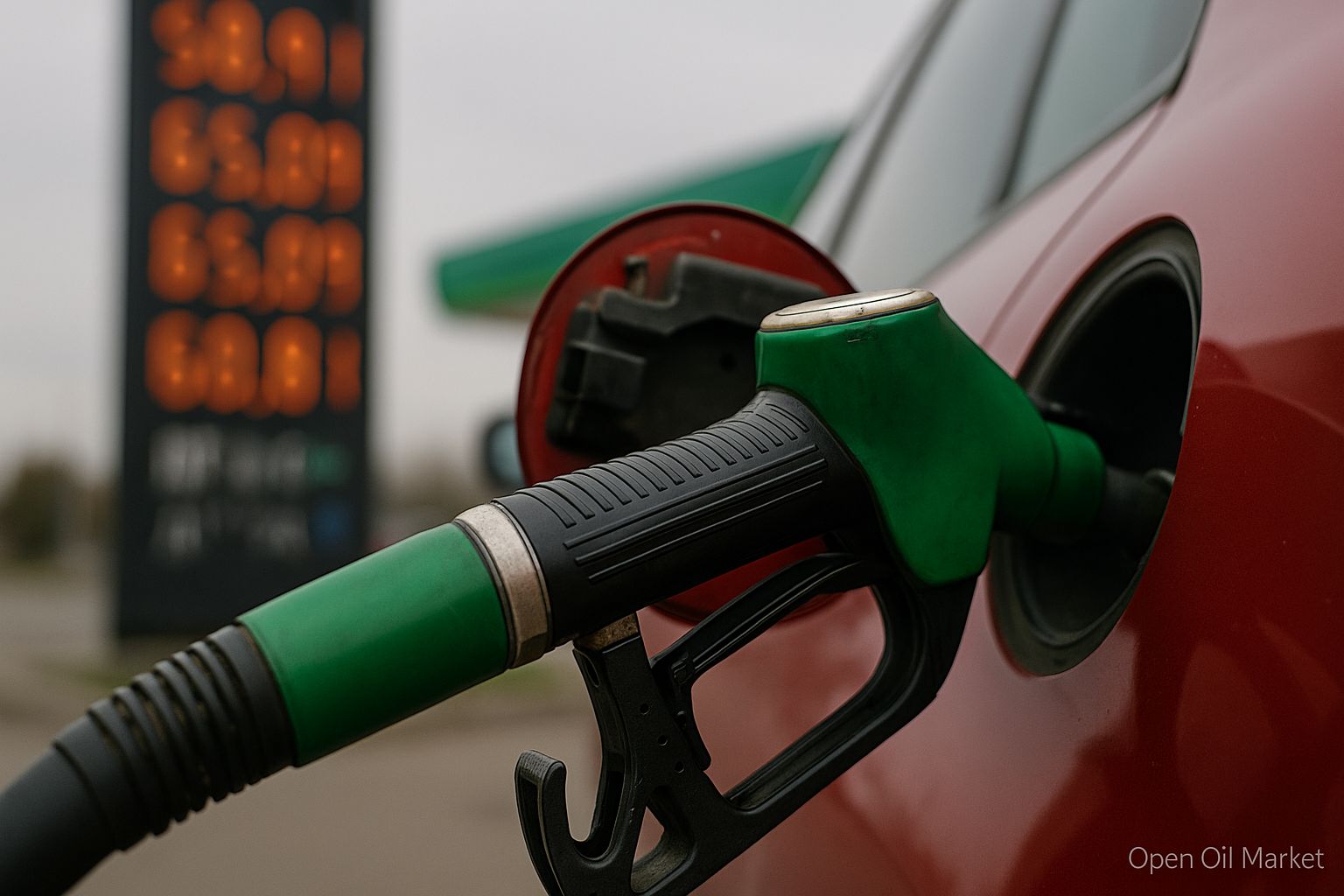
Gasoline Prices Outpace Inflation: Causes of Growth and Prospects for the Fuel Market
At the beginning of August, retail gasoline prices reached new heights, rising faster than overall inflation. In Moscow, the average price for AI-92 gasoline exceeded 58.9 rubles per liter, while AI-95 approached 65 rubles. Over July and the first few days of August, gasoline prices increased by nearly 1 ruble. In the meantime, diesel fuel reached 70.8 rubles/liter, although its growth was noticeably slower. This trend has raised concerns among consumers and stakeholders in the fuel and energy complex (TEC), from motorists to major fuel and oil companies. We will look into the current situation in the oil product market, the factors driving price increases, regulatory measures, impacts on the industry, and the broader energy context along with potential long-term solutions.
Record Gasoline Prices and Diesel Dynamics
At gas stations in the capital, gasoline has set price records. According to the Moscow Fuel Association, the average price for the popular gasoline AI-92 reached 58.91 rubles/liter, while AI-95 stood at 65.09 rubles/liter. Just in the last week of July, the price of AI-92 increased by about 15 kopecks, while AI-95 rose by nearly 20 kopecks. In comparison, diesel fuel saw a mere 10 kopecks increase over the month, costing around 70.83 rubles/liter. Thus, gasoline is becoming significantly more expensive than diesel. Since the beginning of the year, prices for mass-market gasoline types have risen by approximately 2.7–2.9 rubles per liter, while diesel increased by around 1.5 rubles in the same period. These figures reflect the accelerated growth of gasoline prices compared to other types of motor fuel.
Price Increase Compared to Inflation
The rate of fuel price increases has already surpassed overall inflation. According to estimates from Rosstat, from January to the end of July 2025, gasoline prices at gas stations across the country rose by approximately 4.6%, while inflation did not exceed 4.5% during this period. This mirrors last year's trend: during summer, gasoline prices traditionally increase. In 2024, due to rapid growth in the second half of the year, gasoline prices rose by 11.1% annually, outpacing inflation (around 9.5%). This year, the gap between gasoline prices and the consumer price index is still small, but the leading growth is already noticeable.
Interestingly, the structure of the price increase has changed compared to last year. In 2024, most of the hikes were concentrated on premium brands (the price of AI-98 and above increased by more than 20%), while mass grades AI-92 and AI-95 rose by about 9–10%. However, in 2025, the situation is reversed. The primary contribution to rising prices currently comes from popular fuel types: since the beginning of the year, AI-92 gasoline has risen by about 4.8%, and AI-95 by around 4.5%, whereas premium brands have increased by only a little over 2%. This indicates that the price hike primarily affects the mass segment, which is particularly sensitive for ordinary consumers and businesses.
Factors Driving Fuel Price Increases
The rise in petroleum prices is caused by several factors. Key influences on the increase in gasoline and diesel prices this year include:
- Seasonal Demand. The summer months are traditionally a period of peak fuel consumption. The vacation season and active automotive mobility lead to increased gasoline demand. Additionally, diesel consumption increases in agriculture and construction during summer activities. High demand creates upward pressure on prices.
- Reduction of Subsidies (Dampener). In 2025, budget payments to oil companies under the so-called dampener mechanism – compensations for supplying fuel to the domestic market below export prices – have significantly decreased. According to the Ministry of Finance, subsidies fell by nearly 45% in the first half of the year compared to the first half of 2024 (approximately 545 billion rubles versus 986 billion rubles the previous year). Smaller subsidies mean that oil companies find it harder to maintain low domestic prices, and they partially offset lost revenues by raising wholesale and retail prices.
- Increasing Costs and Tax Burden. Additional pressure on prices comes from the rising costs of oil extraction and processing. General inflation and increased taxes (including planned increases in fuel excise duties, changes to the dampener formula, and other fiscal measures) lead to higher production costs for oil companies. Experts estimate that, over the year, retail prices tend to catch up with rising business expenses. This factor becomes particularly pronounced by mid-year, although it is expected that by autumn the effects of the accumulated gap ("shrinkage of the handicap") will ease somewhat.
- Export Attractiveness. High conditions on external markets make fuel exports more profitable than domestic sales. World prices for oil and petroleum products remained relatively high in 2025, and the exchange rate of the national currency is not as strong as before, increasing ruble revenues from exports. In these circumstances, oil companies are eager to maximize exports, reducing supply to the domestic market. This creates a trend of scarcity and contributes to rising domestic prices unless restrictive measures are taken.
- Speculative Market Factors. A significant jump in prices is noted in fuel trading on exchanges. Since the beginning of the year, exchange quotations for gasoline have risen at accelerating rates (for example, the price of AI-95 gasoline at the Saint Petersburg commodity exchange increased by dozens of percent). Market participants note that certain players may have exploited the situation of falling subsidies and expectations of export restrictions for speculative price hikes. Exchange prices set benchmarks for small wholesale, subsequently influencing retail prices.
Government Measures and Market Regulation
To contain the price surge, the authorities have taken a series of steps to regulate the fuel market. At the end of July and the beginning of August 2025, the government implemented emergency measures aimed at increasing domestic supply and cooling price dynamics. The main instruments of influence were as follows:
- Temporary Export Ban on Gasoline. The government announced a complete ban on the export of automotive gasoline (previously, the restrictions pertained only to independent traders, but now apply to processing companies as well). This moratorium is effective at least until the end of August 2025 and aims to redirect additional volumes of fuel to the domestic market. It is expected that due to the inability to send gasoline abroad, oil companies will increase their sales in the domestic market, which should stabilize the situation at gas stations. In the days following the ban, wholesale prices slightly decreased on the expectations; however, within a few days, exchange prices rose again. If no significant price decreases occur, the authorities may extend export restrictions beyond August.
- Monitoring Exchange Fuel Sales. Regulators have intensified monitoring of petroleum product trading on exchanges. The Federal Antimonopoly Service (FAS) is considering increasing mandatory sales quotas for fuel through exchanges. Currently, oil refineries are required to sell at least 15% of produced gasoline and 16% of diesel at auction. Experts suggest increasing these norms (for example, to 30–50%) for large refineries, especially in the European part of Russia. The goal is to saturate the exchange with product to prevent artificial shortages and enhance competition among producers. The government, together with FAS, is also conducting regular dialogue with oil companies, urging them to direct sufficient volumes to the domestic market and avoid sharp increases in wholesale prices.
- Dampener Mechanism and Excise Taxes. One of the long-term levers for controlling prices remains the dampener—a compensation mechanism that mitigates the difference between export and domestic prices. The authorities signaled a potential adjustment of the dampener if the situation doesn't stabilize (for example, increasing payments or changing the calculation formula to support oil refining and keep prices at gas stations in check). Furthermore, there are discussions on reallocating the tax burden on the oil sector: for instance, excessively rapid increases in fuel excise duties could be slowed to avoid adding to retail price increases.
- Manual Regulation and Monitoring. Since 2018, Russia has effectively operated under a manual control regime for the fuel market: the government applies agreements with companies, export limitations, subsidies, and other targeted measures in the case of sharp price spikes. This summer, relevant deputy prime ministers and the Ministry of Energy have been personally involved in the situation, conducting regular briefings and meetings with oil companies. Deputy Prime Minister Alexander Novak publicly called for preventing sharp gasoline price increases during the summer season and began preparing additional steps. Although such an approach helps temporarily suppress price growth, experts note that manual intervention has its limits: without systemic changes, the same reactive measures need to be revisited every year.
Impact on Fuel and Oil Companies, Consumers
- Oil Companies and Refineries: For vertically integrated oil companies that own oil refineries, the current situation is twofold. On one hand, high retail and wholesale gasoline prices boost revenue in the short term. On the other hand, export restrictions and decreased dampener payments significantly impact refining profitability. According to official statistics, the cumulative profit of petroleum producers in Russia fell by more than 60% in the first months of 2025 compared to the previous year. Reduced government support (subsidies) and planted price controls pressure margins. To maintain profitability, companies must seek balance between the domestic market and exports. Many are forced to reduce refining volumes or redirect more oil to crude oil exports, which may create risks for meeting domestic fuel demand in the long term.
- Fuel Companies and Distribution Networks: For gas station operators and fuel distributors, rapidly rising wholesale prices represent a challenge. Retail margins shrink if wholesale market prices rise faster than retail prices can be adjusted at the pump. Nevertheless, major fuel retail chains (including those of major oil companies) gradually raise retail prices, passing some of the increased costs onto consumers. Independent gas stations, which purchase fuel on the open market, suffer even more; for them, rising fuel prices mean either raising prices at the pump and risking losing customers or enduring reduced profits. Consequently, the entire fuel distribution sector finds itself in a position of forced price increases for end consumers to stay afloat.
- Consumers: Motorists feel the impact of gasoline price hikes directly on their wallets. Refueling a full tank costs more, reducing disposable income for households. The increase in gasoline prices affects the budgets of both ordinary drivers and entrepreneurs for whom transportation costs are significant. This can lead to a reduction in discretionary travel, increasing the demand for cheaper types of fuel (for example, AI-92 over AI-95) or a shift towards alternative fuels like gas-powered options. Additionally, rising fuel prices often have indirect effects on the economy: increased transportation costs lead to higher overall costs for many goods and services, contributing to overall inflation.
- Transport Companies and Industry: Logistics operators, agriculture, freight, and passenger transport are particularly sensitive to diesel fuel pricing. Although diesel is rising slower than gasoline, it is already priced above 70 rubles per liter, close to all-time highs. For carriers, this means rising operational costs—transporting goods, bus services, and freight transport become more expensive. Part of these costs is passed onto clients, further exerting inflationary pressure on the economy. Manufacturing enterprises with significant transportation costs or owned vehicles (such as construction and extraction companies) also face rising cost bases. Thus, high gasoline and diesel prices affect a wide range of sectors, increasing costs and necessitating adaptation (optimizing routes, moving to more economical vehicles, seeking fuel discounts from suppliers, etc.).
Global Context: Oil, Gas, and Coal
- Oil. Global oil prices in 2025 remain relatively high. Despite volatility, Brent quotes in the middle of the year hover between $65 and $75 per barrel, substantially above pre-crisis levels. This is supported by OPEC+'s production limitation policy and a recovery in global commodity demand. For Russia, as a major oil exporter, this context signifies a solid flow of export revenue and a high export price parity for fuel. In other words, the external gasoline price (based on oil prices and currency exchange rates) is rising, pulling internal prices along, especially with a weakened dampener. Concurrently, high oil prices sustain the revenues of oil companies, partly compensating for their limitations in the domestic fuel market.
- Gas. The natural gas market follows its own trends. European gas prices stabilized in 2025 after crisis peaks in 2022, and domestic Russian prices remain comparatively low for end consumers due to state regulation. Therefore, the increase in gasoline prices is not directly connected to gas prices. However, gas plays a role as an alternative energy source: against the backdrop of high gasoline prices, interest in gas-powered vehicles (methane, propane-butane) as a more affordable option for transportation is increasing. Some transport companies are switching to compressed natural gas to lower fuel expenses. In addition, gas and coal are the essence of energy generation, affecting electricity tariffs, which indirectly touches the economics of fuel (for example, the electricity cost is important for electric vehicles and oil refining).
- Coal. The global coal market experiences contradictory trends: on one side, countries are gradually transitioning to cleaner energy sources, and on the other, demand for coal remains high in Asia. For Russia, coal remains a significant export item and an important resource for thermal energy. Coal prices have been volatile in recent years, but for the domestic market, fuel coal remains relatively inexpensive and regulated. Coal does not directly influence gasoline prices, as it is used in other sectors (electricity generation, metallurgy). Nevertheless, the general backdrop in energy resource markets (oil, gas, coal) shapes macroeconomic conditions: high global prices for raw materials amplify export appetites and inflation expectations, while a decline in energy resource prices could ease pressure on the domestic fuel market.
Alternatives: Electricity and Renewable Energy Sources
The latest spike in traditional fuel prices raises the question of alternative solutions in the energy and transportation sectors. One approach is **the electrification of transport**. Electric vehicles powered by the grid can partially reduce dependence on gasoline. In countries with expensive gasoline, the transition to electric vehicles becomes a popular cost-saving strategy for citizens and companies. However, in Russia, the electric vehicle fleet is still small (less than 0.5% of the total number of cars, with around 60,000 registered units as of early 2025). The high cost of electric vehicles, limited charging infrastructure, and relatively cheap fuel have previously restrained the spread of electric transport. However, as gasoline prices rise, interest in electric cars and hybrid vehicles is gradually increasing in the domestic market. Major oil and fuel companies have already taken note of this trend, investing in charging station installations at their gas stations and exploring equipment manufacturing opportunities for electric charging. This indicates that electricity is starting to be regarded as an important energy "commodity" for the transportation sector in the future.
Another aspect is the development of **renewable energy sources (RES)**. Although solar and wind power plants do not directly reduce gasoline prices today, investments in RES are changing the overall energy supply structure. On a global scale, the growing share of RES in electricity generation reduces the economy's dependence on fossil fuels. In Russia, the share of renewable generation (excluding large hydropower) does not exceed ~3% in the energy balance, but state programs are aimed at increasing RES capacities. Indirectly, this could also impact transportation: the more clean and cheap electricity produced, the more attractive electric transport becomes. Moreover, some oil and gas companies are investing in RES projects, aiming to diversify their businesses in the future. Research is also underway on alternative fuel types for transportation—biofuels, hydrogen—but their widespread application in Russia remains a question for the distant future.
Forecast and Outlook
In the short term, market participants hope for a relative stabilization of gasoline prices. The government's emergency measures, primarily the export ban, should cool the market: analysts estimate that over the coming month retail price growth will halt, and gasoline will again increase within the bounds of inflation. Thus, efforts will be made to bring fuel price increases under control, not exceeding overall price trends. By the beginning of autumn, the seasonal demand factor will diminish, relieving some pressure as well. Ultimately, there are chances that by the second half of September, prices at gas stations will reach a relative equilibrium.
However, in the medium term, the possibility of further increases cannot be entirely ruled out. If global oil prices continue to rise or the ruble weakens, this will again intensify pressure on the domestic market. Additionally, with the end of temporary restrictions (for example, when the export ban expires), wholesale prices may rise again unless additional measures are implemented. The government has stated it will continue to "keep its finger on the pulse" of the fuel market: if necessary, new agreements with oil companies on price freezes, extensions of restrictions on the export of oil products, or correction of tax mechanisms might be possible.
In the long term, experts agree that structural changes are needed to prevent annual price spikes. This includes developing stock trading and competition, improving the dampener mechanism, stimulating domestic oil refining, and supporting alternative fuel types. Essentially, the challenge is to make the fuel market less dependent on external economic factors and more predictable. If gasoline price growth can be maintained within the bounds of overall inflation by year's end (which has typically been achieved in previous years, albeit through manual management), it will reduce social tension and allow time for systemic solutions to be implemented.
For oil and fuel companies, the current situation serves as an incentive for adaptation: some will modernize refineries to reduce costs, others will expand crude oil exports instead of fuel, while others will explore new niches like gas-powered fuel or electric charging infrastructure. Consumers, on the other hand, should be prepared for high gasoline prices in the coming months. However, with regulatory efforts and moderate external conditions, sharp new spikes may not occur. Thus, the fuel market is entering a phase of "managed price increases"—where growth, albeit ongoing, is restrained within limits set by the government. The primary objective of all market participants in the TEC is now to ensure a balance between producer interests and fuel accessibility for the economy while continuing the industry’s development and transition toward a more efficient and modern energy sector.

